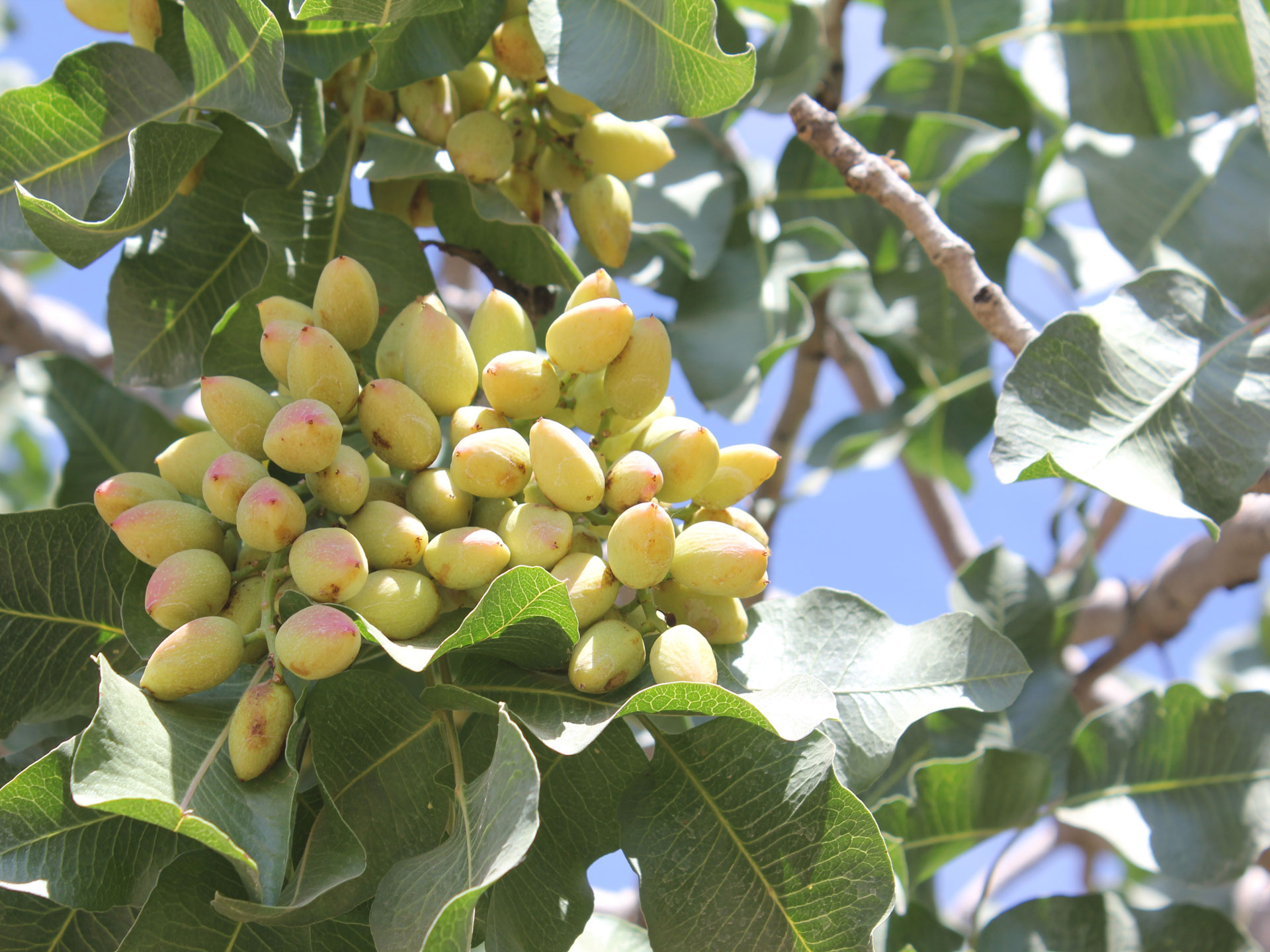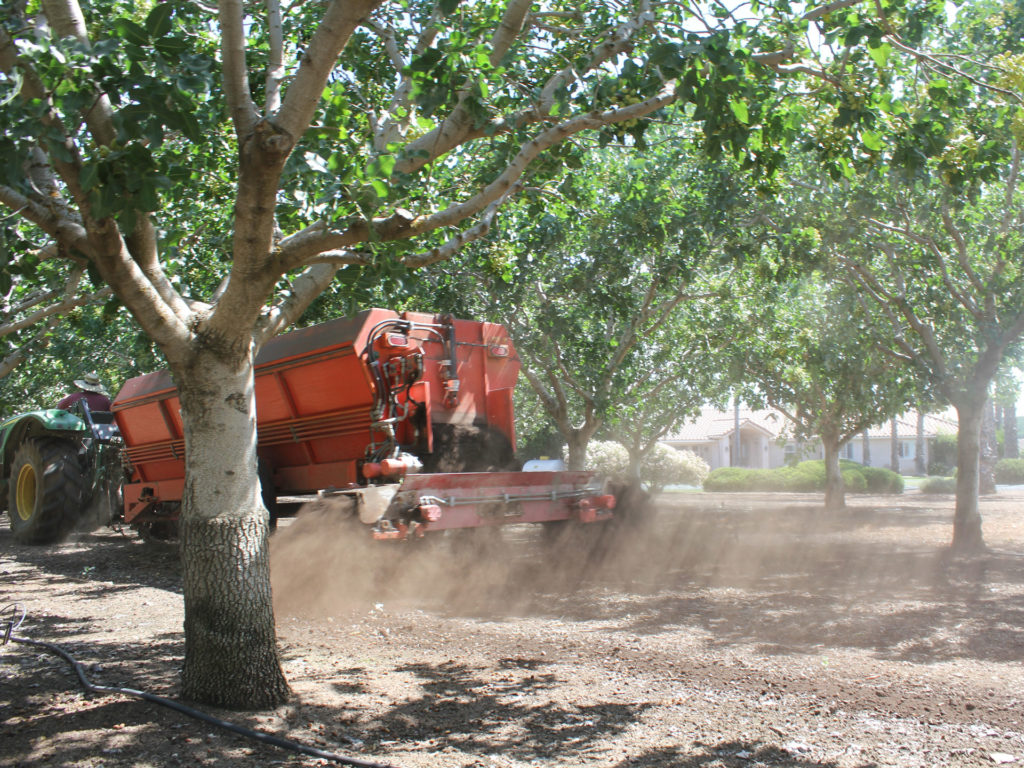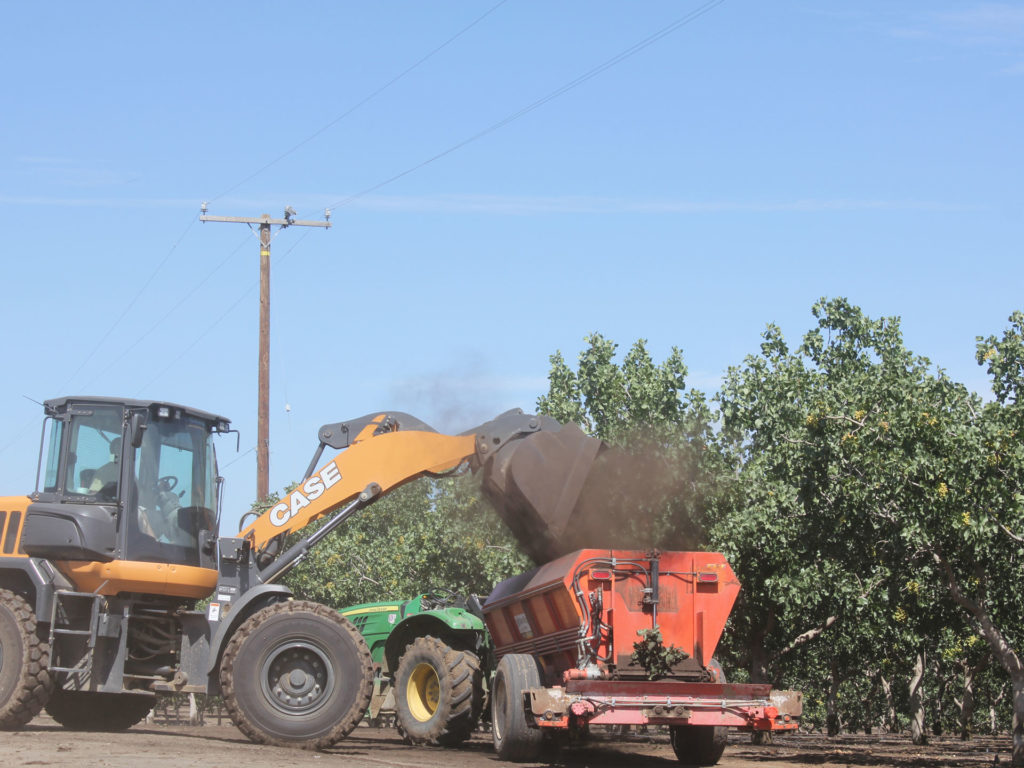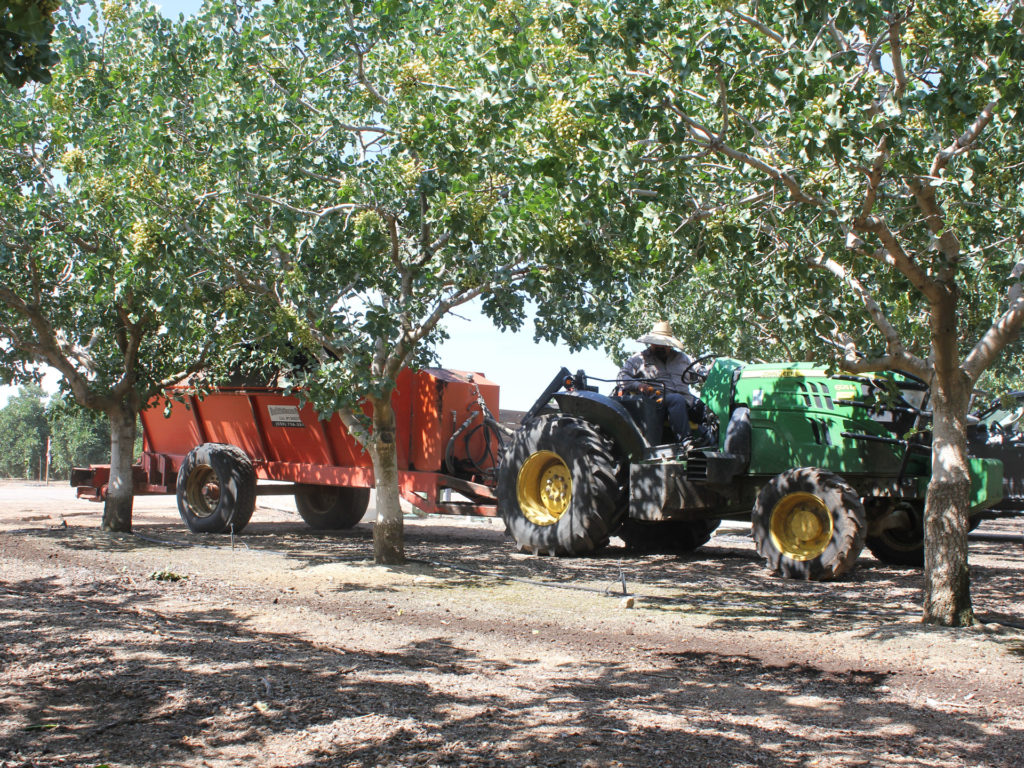
Photo captions: All Photos Courtesy of Cecilia Parsons.
Adequate chill over the winter in all California growing regions, plus new acreage coming into production are expected to bring in a harvest that is estimated to be in the 700-850 million pound range. That is not close to record 994 million pounds of pistachios harvested last year in California, Arizona and New Mexico, but is very good production for this alternate bearing crop, said Richard Matoian, executive director of American Pistachio Growers.
Increased Acreage
Matoian said he is comfortable with the 700-850 million pound range that was forecast at the International Dried Fruit and Nut Congress in May. The favorable weather conditions played a part in the good size crop, but the additional pistachio acreage coming into production continues to boost crop size. The pistachio industry last year reported 260,000 acres of pistachio trees in production. This year, 288,000 acres will contribute to the harvest. The 2020 pistachio crop is on target to hit the one billion pound mark, Matoian said.
The spike in productive pistachio acreage this year goes back to 2013 when new plantings increased. Those young trees are now making significant contributions to the total pistachio nut harvest.
Cooler Spring Weather
Zack Raven, farm manager at Keenan Farms, said in late June that kernel fill was just beginning and estimates for a larger than normal ‘off’ year were coming in. Keenan Farms is one of the larger grower-processor of pistachios and is located on the west side of the San Joaquin Valley, a location that Raven said is optimum for avoiding fungal and bacterial diseases due to the dry and windy conditions.
Raven said chill portions were sufficient for pistachio trees last winter, but a longer pollination period, caused by cooler weather, will cause some maturity variability come harvest time. Last year’s crop warranted some second shakes due to similar weather conditions and Raven said he expects that second shakes to get the later maturing nuts off the tree will be done given the larger size of the crop. He estimates that harvest of the Kerman variety could be pushed back to September 10th or 12th this year due to cooler spring weather.

Keenan Farms uses mating disruption as part of their program to keep navel orangeworm (NOW) levels low in their pistachio orchards. Raven said they had very low NOW damage levels last year due in part to hull integrity. The hulls stayed intact and did not deteriorate prior to harvest, he said, contributing to lower NOW damage levels.
Justin Nay of Integral Ag offers a slightly smaller crop estimate from north to south. Most of the ranches he oversees are in an ‘off’ year but 25-30 percent are in an on year. There are some blocks with a heavy crop, but he said on average, this crop appears to be an average off year crop. Most pistachio acres are carrying a good crop with good size nuts and not too many pea sized nuts. Due to navel orangeworm concerns, Nay said they are hoping early splits do not materialize.
Meat fill has been going on since early June in Golden Hills and Lost Hills varieties and was picking up in Kerman, he added.
Bloom
Nay said pistachio trees bloomed this year as if they did have adequate chill hours and a decent rest break. The female bloom was longer that the males, starting ahead at most ranches and finishing after the males. The male bloom, he noted, was too compressed at some locations, but overlap was excellent in good weather conditions.
Young pistachio trees in the Sacramento Valley did show signs of frost damage or water logging and had poor push.

Arizona
Arizona pistachio grower Jim Graham said that state’s producers are looking at a mix of ‘on’ and ‘off’ year production in their orchards. The state’s pistachio acreage is increasing from about 4,000 producing acres in 2017 to nearly 6,000 acres. Graham said much of the planned expansion of the crop has now been completed, but depending on water availability, new orchards are being planted.
In Graham’s Cochise County orchards in southeastern Arizona, this is an ‘on’ year. July hailstorms in 2018 affected production and Graham said orchards that lost production are coming back with a large crop.
Like California pistachio production, crop maturity has been delayed, Graham said. The trees had adequate chill and moisture over the winter, but did not have the early heat units required and will be 10 days to two weeks behind the normal harvest time.
“Usually we are seeing kernel fill now, but just that isn’t the case. Bloom went well and we didn’t have the usual spring rain,” Graham said.

Marketing Outlook
Outlook for marketing this relatively smaller pistachio crop is good, Matoian said. The tariffs imposed on U.S. pistachios have not slowed imports from the industry’s largest customer, China as shipments to that country continue and at levels above last year’s.
Foreign customers of U.S. pistachio nuts do not have alternate sources as the Iranian pistachio crop was much smaller last year and is not expected to rebound. India, which has imposed tariffs on almonds and walnuts, but not pistachio nuts, is expected to soon become one of the largest markets for U.S. grown pistachio nuts, Matoian said.

Cecilia Parsons
Cecilia Parsons has lived in the Central Valley community of Ducor since 1976, covering agriculture for numerous agricultural publications over the years. She has found and nurtured many wonderful and helpful contacts in the ag community, including the UCCE advisors, allowing for news coverage that focuses on the basics of food production.
She is always on the search for new ag topics that can help growers and processors in the San Joaquin Valley improve their bottom line.
In her free time, Cecilia rides her horse, Holly in ranch versatility shows and raises registered Shetland sheep which she exhibits at county and state fairs during the summer.















